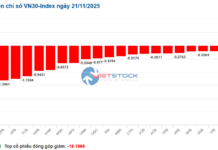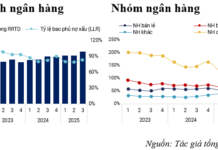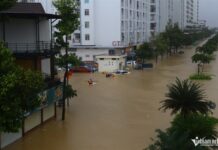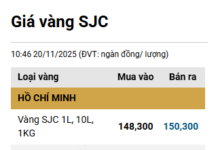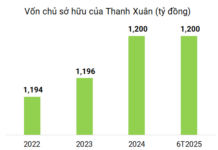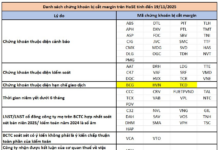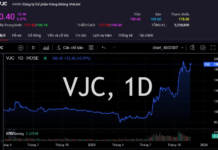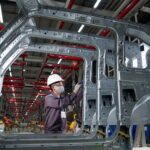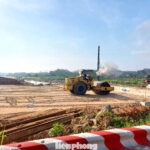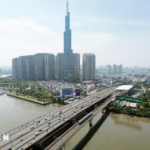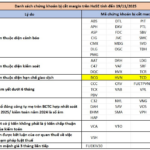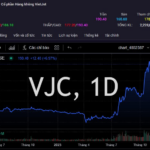
Recently, Vingroup proposed the construction of a 15 km sea-crossing road connecting Can Gio and Ba Ria – Vung Tau to enhance connectivity and economic development. According to Vingroup, following the merger of Ba Ria – Vung Tau province into Ho Chi Minh City, the need for a direct road link between Can Gio’s coastal area and Vung Tau has become increasingly urgent.
In response to Vingroup’s proposal, the latest dispatch from the Ho Chi Minh City People’s Committee (UBND TP.HCM) stated that Deputy Chairman Bui Xuan Cuong has directed the Department of Finance to urgently coordinate with relevant departments and units to review Vingroup’s request. This proposal involves the investment in a sea-crossing road connecting Can Gio and Ba Ria – Vung Tau under the BT (Build-Transfer) model.
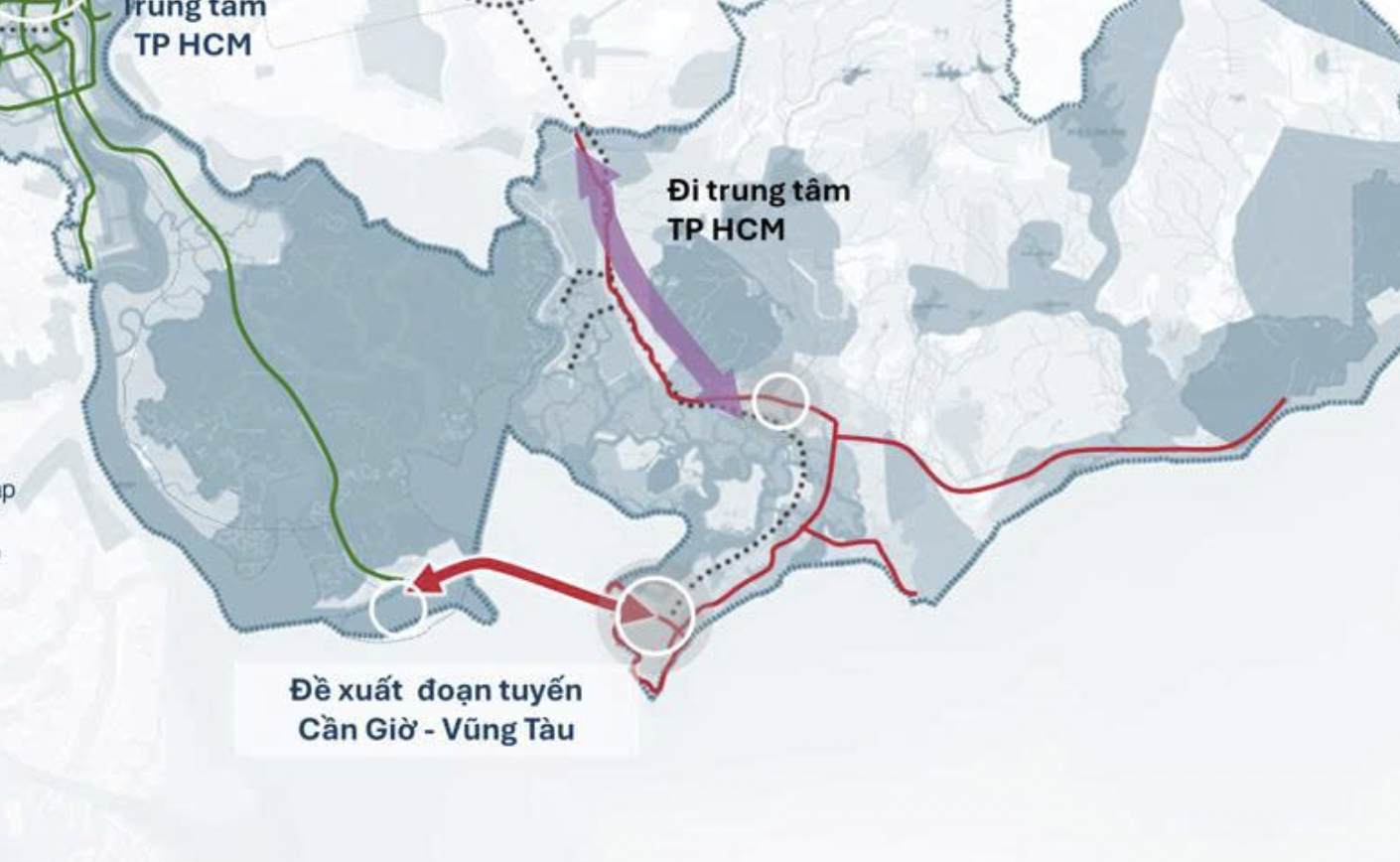
The Ho Chi Minh City People’s Committee has instructed the Department of Finance to expedite the review of Vingroup’s proposal for the sea-crossing road project.
Once dubbed the “isolated corner” of Ho Chi Minh City due to its limited connectivity via ferries and restricted waterways, Can Gio district is now undergoing a transformative shift thanks to a series of integrated infrastructure projects. From roads and railways to waterways, major initiatives such as the Can Gio Bridge, the Can Gio – Vung Tau sea-crossing bridge, and the Phu My Hung – Can Gio high-speed railway are not only reducing travel times but also positioning Can Gio as a new hub, connecting Ho Chi Minh City with the Southeast region during the 2025-2030 term.
Specifically, according to the latest planning, Can Gio will be connected through three main infrastructure pillars: roads, railways, and waterways, creating a synchronized “triad” that turns this area into a hot investment spot. Currently, Can Gio’s transportation system is being accelerated along four main axes, including a future air route from Long Thanh Airport, to leverage its coastal and mangrove forest advantages.
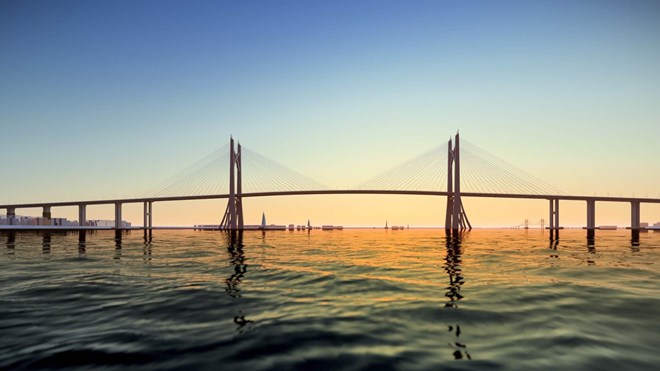
The Can Gio Bridge features a cable-stayed design with two main towers. Image: Ho Chi Minh City Department of Construction
In terms of road infrastructure, the Can Gio Bridge is expected to break ground in 2026 with a total investment of approximately 11 trillion VND. This 7 km bridge will completely replace the overloaded Binh Khanh ferry, creating a direct connection from Nha Be to Can Gio’s center, reducing travel time from over 2 hours to just 30-40 minutes.
Simultaneously, the Rung Sac road interchange with the Ben Luc – Long Thanh Expressway is under construction, enhancing accessibility from neighboring areas like Binh Duong and Dong Nai. These projects not only alleviate congestion but also support the Can Gio land reclamation initiative, transforming the area into a green megacity spanning thousands of hectares.
For high-speed rail, the Phu My Hung – Can Gio high-speed railway, designed for speeds up to 350 km/h—the fastest in Vietnam—will cover approximately 48.5 km, directly connecting District 7 (Nguyen Van Linh) to Can Gio’s center. This route will turn geographical distance into a “matter of moments.”
The Phu My Hung – Can Gio high-speed railway is proposed as part of a multi-dimensional transportation ecosystem, terminating at the ESG++ megacity, a nearly $3 billion investment by Vingroup. Once completed, the metro line will not only serve residents but also boost tourism and logistics, establishing Can Gio as a “hub” linking Ho Chi Minh City with Ba Ria – Binh Duong.
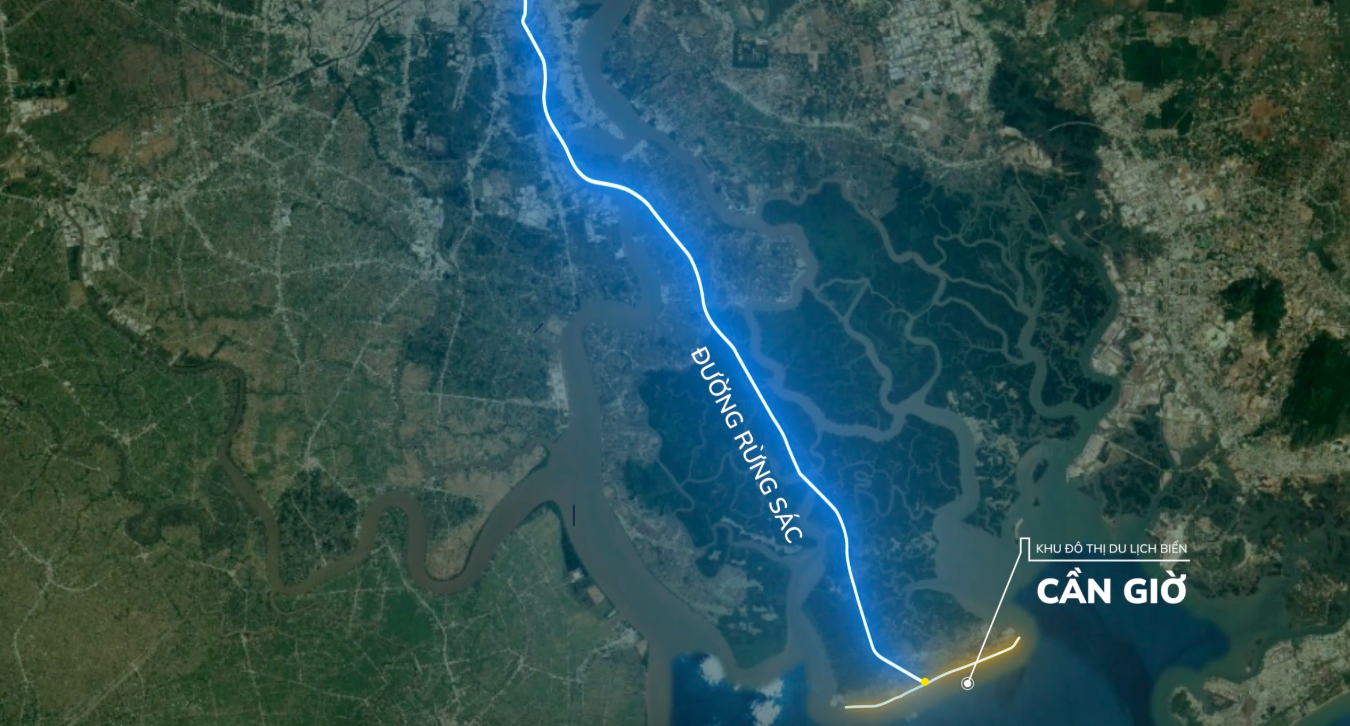
Route of the high-speed urban railway connecting the city center to the Can Gio reclaimed urban area – Vinhomes Green Paradise – Vingroup.
For waterways, Can Gio is being positioned as a major seaport center with plans for 7 large container terminals (up to 24,000 TEU) and 2 general cargo terminals by 2030. However, the most significant catalyst is the proposed 15 km Can Gio – Vung Tau sea-crossing bridge, with an estimated cost of 62 trillion VND under the PPP (Public-Private Partnership) model. This bridge will span the Soai Rap River and the sea, reducing travel time from Can Gio to Vung Tau to just 10 minutes, down from the current 4 hours.
Previously, Can Gio was “overlooked” due to the lack of direct roads, accessible only by ferry or circuitous routes. Studies on the Can Gio Bridge since 2015 faced planning obstacles, but with the anticipated merger of Ho Chi Minh City – Binh Duong – Vung Tau, this area is now a top priority. These projects not only improve transportation but also stimulate investment in real estate, ecotourism, and logistics.
According to experts, this infrastructure triad will transform Can Gio into the “Singapore of Vietnam” in terms of green urban development, attracting millions of tourists and businesses. Deputy Chairman Bui Xuan Cuong emphasized that synchronized implementation will help Can Gio “rise up,” significantly contributing to Ho Chi Minh City’s goal of becoming a leading smart city in the region.
With this momentum, Can Gio is no longer an “endpoint” but a future gateway, promising a new era for Southern Vietnam. Authorities are expediting procedures, and the community eagerly anticipates the commencement of the first projects in 2026.
Tu An
Real Estate Firms Frozen by Land Use Fee Uncertainty
In addition to the developer of Empire City petitioning the Ho Chi Minh City People’s Committee to reconsider the additional land use fee of up to VND 8,819 billion, and Lotte Properties HCMC terminating its contract for the Thu Thiem Eco Smart City project, approximately 100 other projects in Ho Chi Minh City are awaiting financial obligation notices, which may include additional fees.
Vingroup Launches VinMetal with $430 Million Capital: Specializing in Advanced Steel for Electric Vehicles
With a staggering $4.3 billion investment, our company is spearheading the development of a state-of-the-art industrial steel manufacturing complex in Vung Ang, Ha Tinh. Phase 1 of this ambitious project boasts an impressive annual capacity of 5 million tons, setting a new benchmark for high-tech steel production in the region.
Unveiling the $260 Million Southeast Vietnam Drainage and Flood Control Project
The Suoi Cai Drainage Axis project in Ho Chi Minh City, with an investment of nearly VND 6,000 billion, is a transformative initiative. Designed to address flooding and improve drainage in the former industrial hub of Binh Duong, this project extends its benefits to the entire Southeast region. Flanking the drainage axis are newly constructed roads, complete with sidewalks and greenery, enhancing both functionality and aesthetics.
Ho Chi Minh City Vice Chairman Directs Action on Proposed Can Gio – Vung Tau Sea-Crossing Road
Bùi Xuân Cường, Vice Chairman of the Ho Chi Minh City People’s Committee, has tasked the city’s Department of Finance with leading the review and proposal for a feasibility study on a sea-crossing route connecting Can Gio and the former Ba Ria – Vung Tau area. The project is to be developed under the Build-Transfer (BT) model. Collaborating with relevant departments and units, the Department of Finance is expected to submit recommendations to the city’s People’s Committee by October 10.

